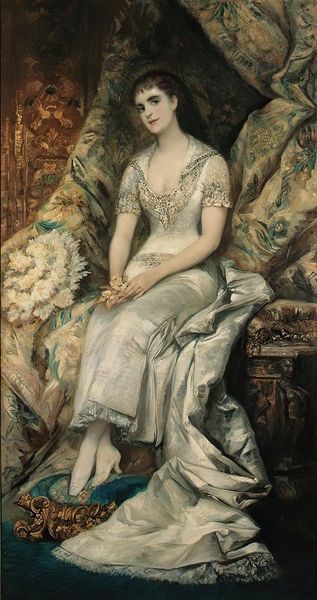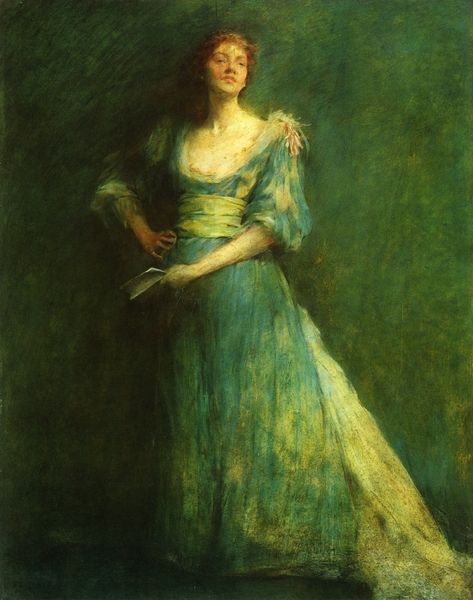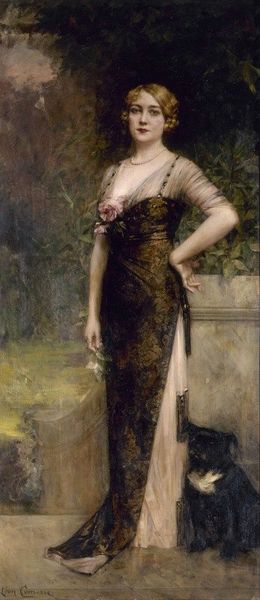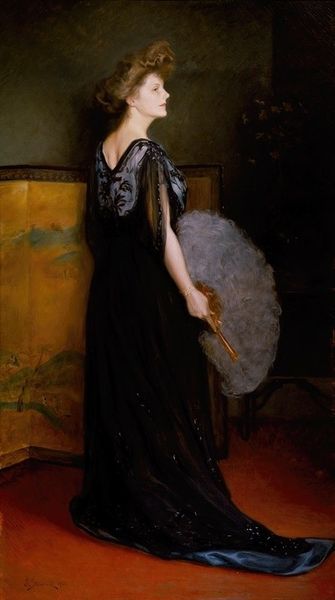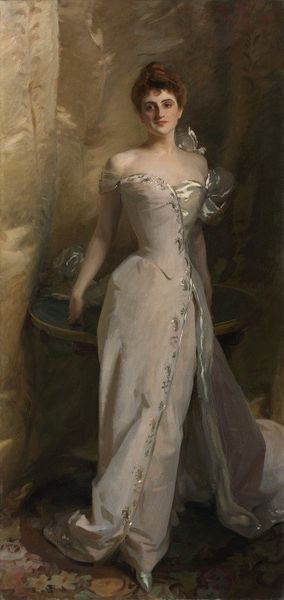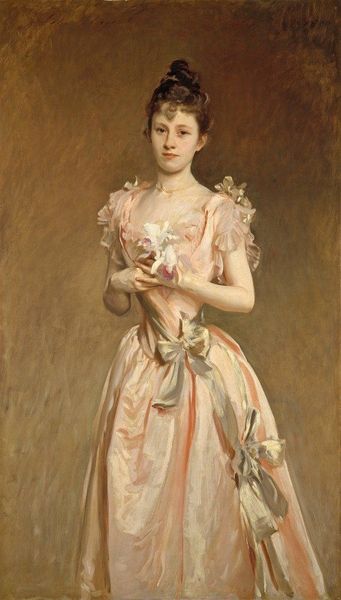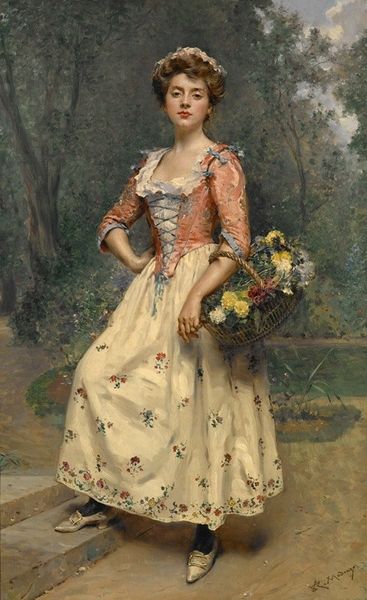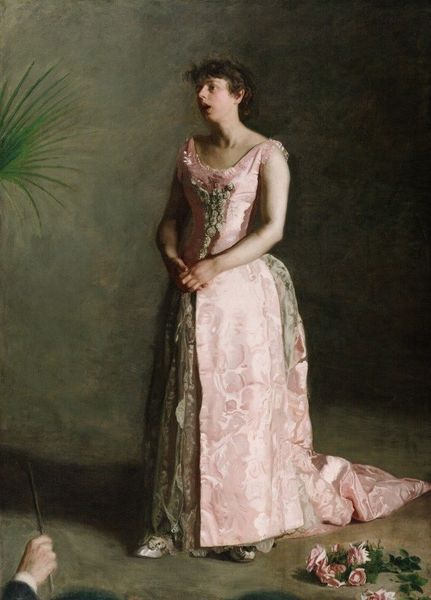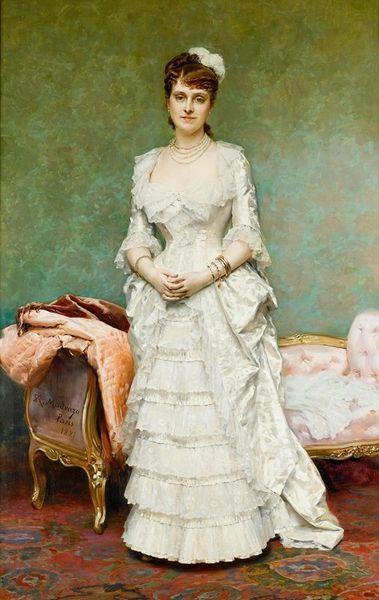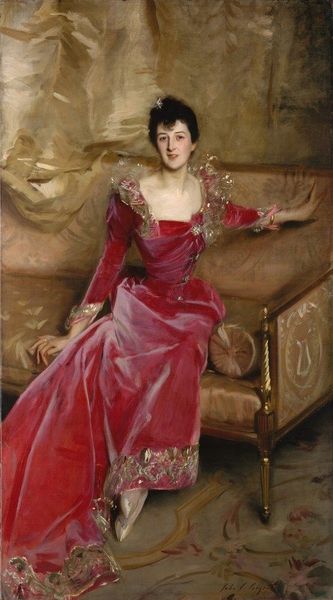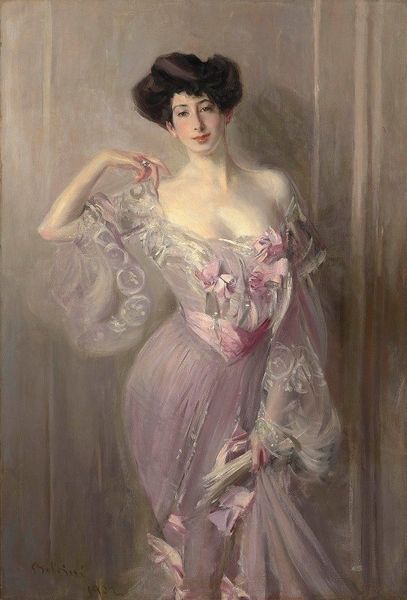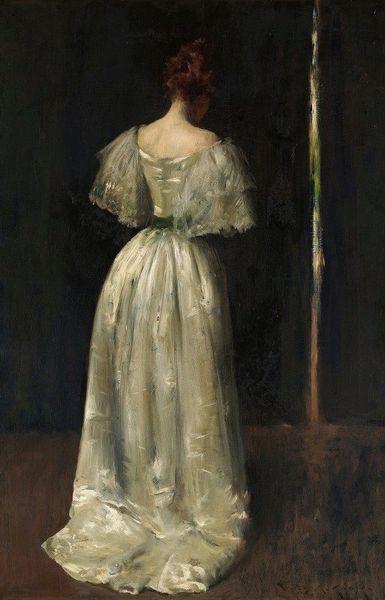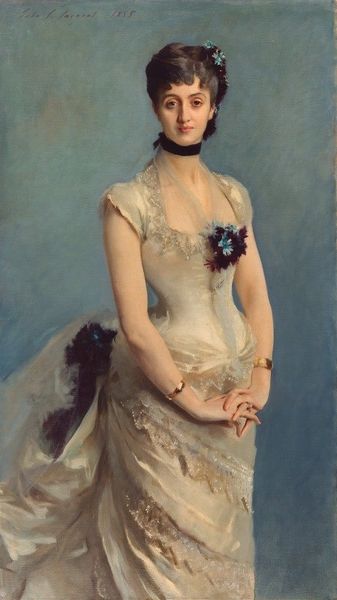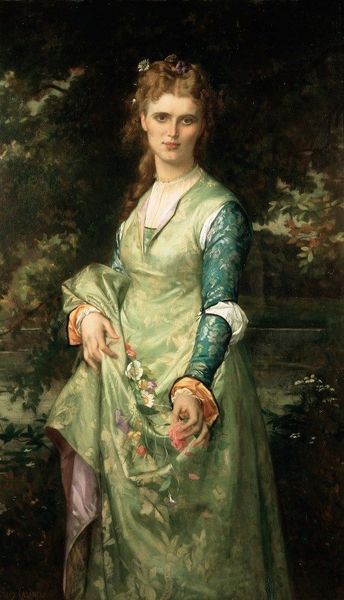
Copyright: Public Domain: Artvee
Curator: Welcome. We're standing before John Singer Sargent's "Portrait of Millicent Leveson-Gower, Duchess of Sutherland," painted in 1904. What strikes you first about it? Editor: It's intensely romantic. The woman seems caught in a moment of reverie. The hazy greens and diffused light create an otherworldly feeling. I'm reminded of pre-Raphaelite paintings celebrating women and nature. Curator: Yes, Sargent brilliantly uses plein-air techniques here. Notice the loose brushwork, especially in the rendering of the foliage, to give it that fresh and spontaneous air. It perfectly reflects the ideals of Impressionism—capturing fleeting moments and the effects of light and atmosphere. The overall composition directs our attention to her poised figure. Editor: But isn’t there a tension between that spontaneity and the subject matter? Here is a woman who holds significant political and economic power through her lineage. As a duchess, she played an active role in social reform movements, like advocating for better living conditions for working-class people. Do we see that in this portrait? Or is she presented purely as an aesthetic object? Curator: That's an insightful point. Sargent’s brushwork definitely elevates the aesthetic value of the portrait. But, consider the symbolism of her surroundings. The garden, for example. What could be interpreted from this location or her dress, itself adorned with nature? Perhaps it suggests a connection to nature or an embodiment of fertility, beauty, and the aristocratic ideal of cultivated leisure? Editor: Perhaps, but it's also important to recognize how portraits of wealthy and influential women have often served to reinforce societal expectations around femininity and class. Does this portrait perpetuate a romanticized image of the upper class, diverting from any true political or social impact she might have had? I think that is one aspect to this that shouldn't be left unexplored. Curator: Food for thought, indeed! It highlights the complexity of portraiture and the importance of examining artworks from multiple viewpoints to unearth meaning. Editor: Absolutely. And Sargent's skill invites a deeper conversation beyond aesthetics, urging us to consider how class, gender, and representation intersect within the painting’s framework.
Comments
No comments
Be the first to comment and join the conversation on the ultimate creative platform.
